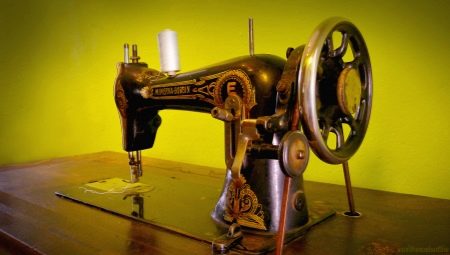Our ancestors wore magnificent clothes of complex cut, which took a lot of fabric and months of manual labor. The invention of the sewing machine was a breakthrough in tailoring, and since everyone wears clothes, the significance of such an aggregate can be assessed as the greatest creation of mankind. Let's talk about old sewing machines: their varieties, brands and uses.
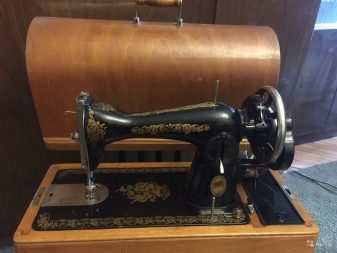
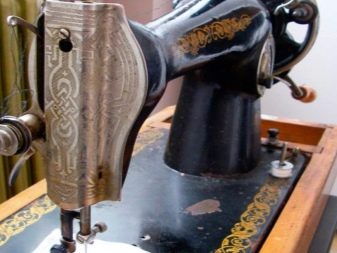
A bit of history
The first attempt to mechanize the work of a tailor was made by T. Saint in 1790but the stitches on the finished product quickly loosened. B. Timonier improved the apparatus, although it still did not resemble the familiar Singer. The first machine with shuttle and needle was released by E. Gow in 1846 in the USA, her stitches were also far from perfect. They became tenacious only after 10 years through the efforts of D. Gibbs, who launched the machine into mass production. And in the 70s of the XIX century. an electric drive was connected to it, thereby bringing sewing to an industrial level.
The most famous sewing machine, which lasted more than a century, was created by Isaac Singer in the middle of the XIX century. It was he who invented a device with which the needle moved up and down, and not in a circle, like its predecessors. The needles of modern machines work in the same way. His products could be repaired at home, simply by ordering parts, and earlier, after a breakdown, the units were simply discarded.
Easy maintenance made it possible to distribute Singer sewing machines around the world, and now they can be found in many homes.
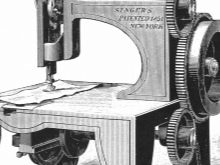
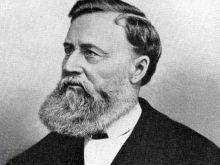
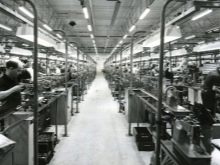
Types and principle of their work
From the moment of opening to the present day, sewing machines have been constantly modernized. Having worked their age, old products settled in the collections of lovers of antiquity. Thanks to them and the museums of sewing, we can find out on what our ancestors sewed their clothes.
Singer
Description of the types of old cars will start with the most popular - Singer. Many legends are associated with this equipment, one of them reports on the precious metals of which some elements of the machine are made. Perhaps this information raised the demand for Singer among antique dealers, but in reality it has not been confirmed. This model contains details such as:
- flywheel is quite massive;
- elongated shuttle;
- manual drive endowed with two gears.
The working moment of the equipment is to create a double loop for gripping during the contact of the loop with the shuttle. "Singer" has an ideal line, the unit is simple and understandable. Many models today are in working condition and are ready to "compete" with modern equipment.
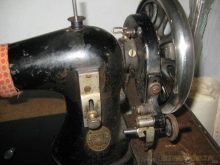
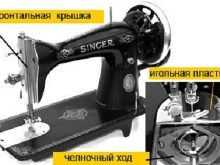
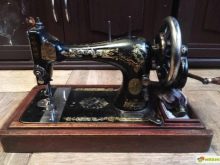
"Podolsk PMZ"
A sewing machine was released in the USSR in 1952 at the plant named after Kalinin. It gained well-deserved popularity among consumers; it could be found in many Soviet homes. The device and principles of operation of the equipment was as follows:
- the machine produced 1.2 thousand revolutions per minute;
- sewed stitches up to 4 mm long;
- had a central bobbin shuttle;
- was equipped with manual and foot drive.
Podolsk PMZ was stably mounted on a flat platform. In some homes, today you can find a similar product.

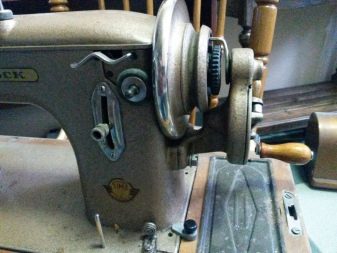
Tula
At about the same time as the previous model, the Tula sewing machine was launched in the USSR. In its production, elements from industrial machines were used, which made it possible for the model to work with greater efficiency. She had an electric drive and was equipped with comfortable foot pedals. At the same time was endowed with manual control. The machine has established itself as a progressive and multifunctional device. Unfortunately, favorable conditions for maintenance were not created, so the popularity of the model eventually waned.
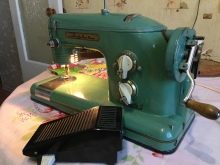
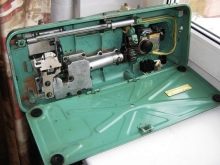
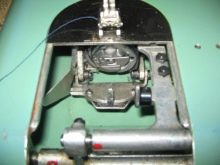
Manufacturers
Each country tried to contribute to the production of sewing equipment. German, Polish names of cars are known. Each brand had its own peculiarity. But the American corporation with the fantastically successful Singer model was the most distinguished.
Singer
Starting with the famous Singer product, all subsequent models of various sewing machines were produced in droves and were designed for a wide consumer. They had the same type of device and similar appearance. The reason was the patent that Singer had for his invention. To produce cars could be one who acquired the brand’s licenses.
For instance, Afrana model was also licensed by Singer. The shuttle of such a machine was used in the initial projects of sewing equipment and has long been outdated. Modern fabrics can not even be tried to sew on such antiques.
Today Afrana is suitable only for retro interior design, and if it is in good condition.
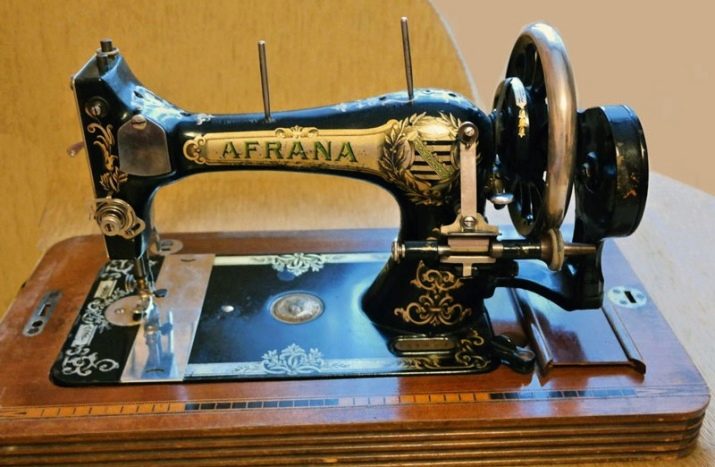
Borletti
The Italian company Borletti in 1966 released its line of sewing machines with electric drive. In the USSR, they were extremely rare. The product was equipped with a compact folding table, had several varieties of lines, a convenient pedal. The kit included a suitcase for storage and transportation. The designer of the model seemed to have looked into the future, and even today it resembles modern products in appearance.
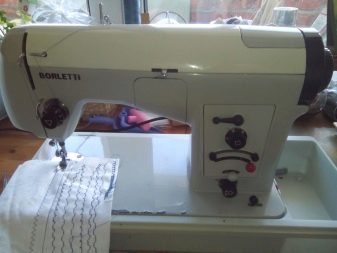

Buterfly
The Chinese manufacturer Buterfly released a sewing machine, in all respects resembling a Podolsk product. It differed only in the rotation of the tail of the bobbin, in the Chinese model it is turned to the right. In the typewriter was not provided any frills, she performed only one line.
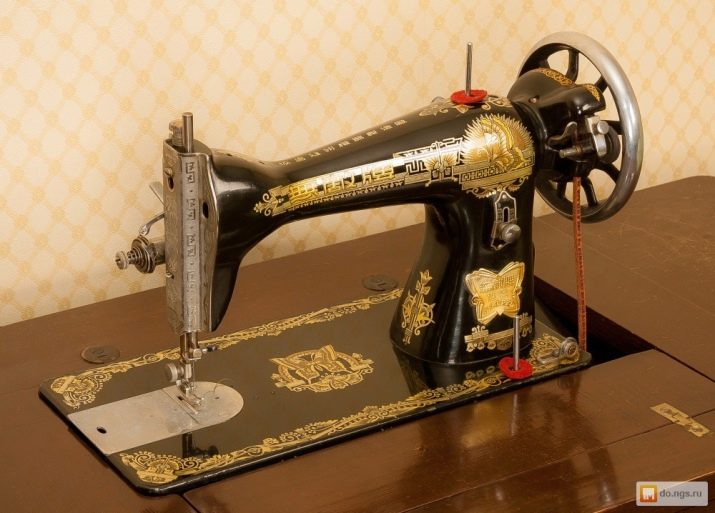
"Podolsk Mechanical Plant"
In the 60s of the last century in the USSR at a mechanical plant in Podolsk a very successful model of the sewing machine “The Seagull” was developed and produced. She had a powerful electric motor, she performed zigzag lines and a straight line, adjusted the size of the stitch, was endowed with a reverse lever and a device for tensioning the upper thread. It was massively acquired by Soviet families, as the machine was simple and reliable. Subsequently, other sewing equipment began to be produced at the plant - “Seagull 132, 143” and about 20 more varieties.
In the early 90s, they were released about 1,800,000 units, after which production began to decline due to the deplorable economic situation in the country.

Csepel (Chapel)
Hungarian manufacturer released model Csepel-30, which is a copy of the Podolsk machine. The product did not have any special innovations, but at that time there was a demand for similar options.
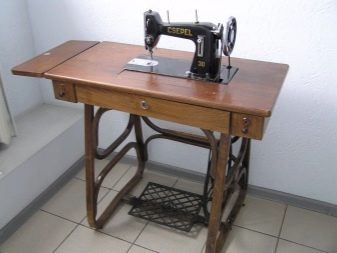
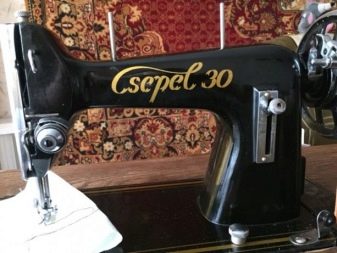
Terms of Use
An instruction or diagram will promptly tell you how to use a sewing machine, but it is difficult to find operating rules for old products. Cheer up is not worth it, the main thing for sewing is to thread a thread correctly. So, all actions should be performed in order.
- To get a manual machine and prepare it for work, you need to open the box in which it is stored. This can be done even without a key in case of loss of it, just turn something sharp in the hole, since the ingenuous lock is more likely conditional than protective.
- The equipment is installed on a flat, reliable plane that will not stagger during sewing.
- It is necessary to check the serviceability of the machine, set it up to work. If the equipment has stood for many years, and its condition is unknown, the setting should be done by a professional.
- At the exposed and tested machine, you need to find the needle holder, lift it up to the stop, insert the needle and fix it with a screw. The needle must be installed in accordance with the thickness and density of the fabric. The difference can be seen in the tip and diameter of steel products. When sewing coarse fabric, the thin needle may break.
- Pointers on the machine itself will help to properly thread the thread. With their help, it becomes clear in which direction the thread should be passed through the eye of the needle.
- The sewing process itself occurs with the help of the translational movement of the needle and the nodular connection of two threads - upper and lower. To install the lower one, open the groove located under the needle of the machine and insert the bobbin. Threading the thread is not so difficult, you should turn the handwheel a little and it will come to the surface. For perfect sewing, the upper and lower threads should match in thickness and texture. It is better if they are taken from one coil.
- Next, a fabric is set under the needle. It is necessary to rotate the handwheel in one direction with the handle, backward movements will confuse or tear the thread. Rotational movements begin slowly, then you should increase the speed. During sewing on an old machine, the fabric will have to be guided by hand, forming an even seam.
- On some machines of past years, it may be possible to switch modes that are responsible for thread tension, sizes and types of lines.
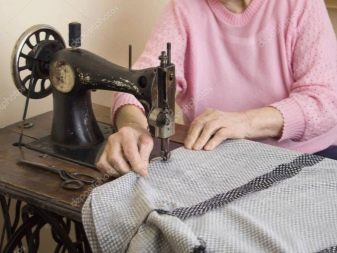
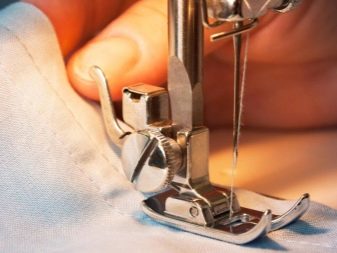
To make the sewing perfect, we suggest using the following recommendations:
- safety must be observed, do not put your fingers under the needle while rotating the flywheel;
- Do not try to flash a hard surface, for example, a button, as the needle will break;
- Do not rotate the flywheel idle, without the fabric tucked in, as in this way it is possible to entangle and tear the thread, and to blunt the needle;
- during operation, all covers on the machine should be closed and the levers correctly set.
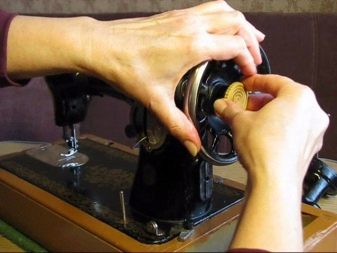
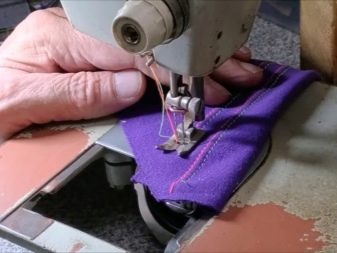
Possible problems
Counting on high-quality tailoring, an even beautiful line, is possible only with the complete serviceability of the sewing machine. If the line is broken, the stitches are skipped, the thread is confused - it is time to correct the situation. Consider what kind of failure occurs, and how they can be fixed.
Breakage of the upper and lower threads
The causes of the cliff are different. For the upper thread, they are as follows.
- The thread is incorrectly threaded, seizes. This is easy to fix by following the instructions.
- The thickness of the thread is incompatible with the size of the needle, the situation is resolved by a simple replacement of the steel product.
- Threads of poor quality are used, you need to pick up stronger ones.
- The progress of the thread can be impeded by subtle notches. They are found if you observe the thread (in what place it catches). The defect is removed with a small file. In old-type machines, cuts can be formed on the rod for pulling the threads, made by long contact with the threads. They are removed with sandpaper.
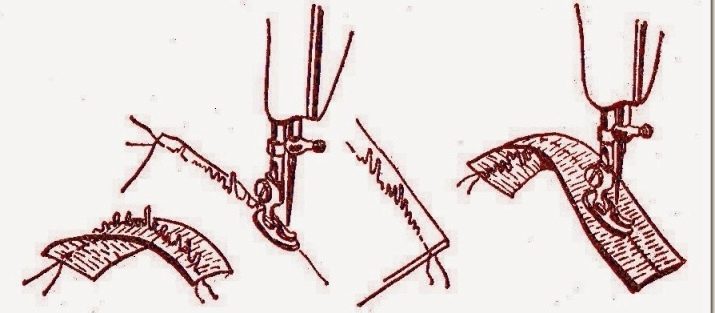
Causes of thread breakage (bottom).
- The spring located in the cap of the bobbin changes shape. To eliminate the cause, they take out the cap, unscrew the screw inside it, remove the lock, after which a long spring is detected. It can be tried to slightly stretch and tighten, trying to return to its previous state. If this does not help, you will have to purchase a new bobbin case.
- The reason may also be in the bobbin, which is not designed for this model of machine. In order not to make a mistake with the choice, you need to take a “native” part as a sample and try to find the same one.
- Poor thread quality often causes the breakage of both the upper and lower threads.
- The thread breaks and from excessive tension.
- A strong protruding screw on the bobbin, which presses the spring, can become a hindrance. Over time, serrations form on the screw, they can also cling and tear the thread.
- Notch can also cause a gap on the walls of the bobbin, in which case it should be changed.
- Deformed bobbin edges also pose a risk of tearing the thread.
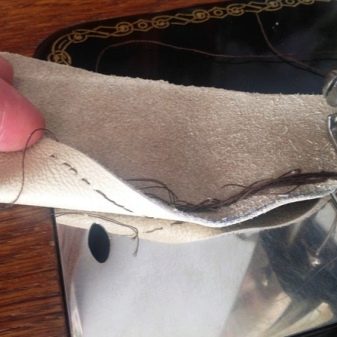
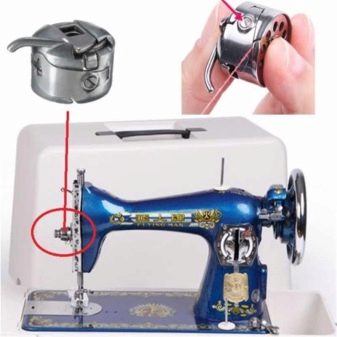
Jagged stitch, thread loop
Such a defect can be caused by various reasons.
- Unevenly wound thread on a bobbin or bobbin. This situation occurs if the thread is wound manually. To correct a defect, rewind it on a specially provided device.
- The stitch can loop, if the lower thread is under strong tension, and the upper is weakened, you just need to normalize the situation. By the way, the string will be uneven in the opposite case: the upper thread is stretched and the lower one is weakened, as well as with both tightened threads or both weakened.
- The cause may be dirt falling under the bobbin case spring, in which case the damaged part should be replaced.
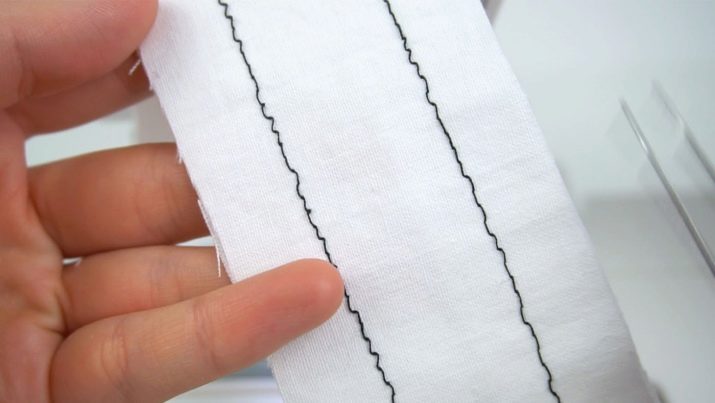
Skip Skips
The reason lies in the mismatch of the thread, needle and material, everything must be selected correctly, the required thickness. The distance between the needle and the tip of the hook also needs to be adjusted.
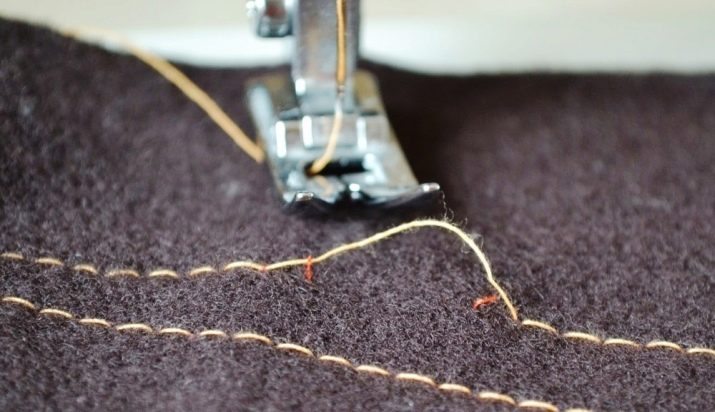
The fabric is not moving well.
The reasons for this trouble are as follows.
- It is necessary to check the sole of the foot, it should firmly press the fabric. If there is a skew, the foot should be adjusted.
- You should check the teeth of the rail, perhaps by mistake they were installed in a different mode. By the way, the rail should not be too raised, otherwise the fabric will be pulled together.

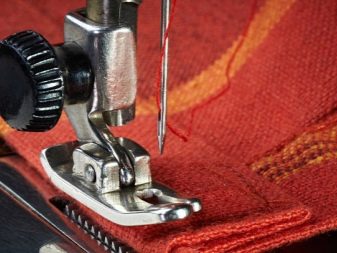
Needle breaking
If this happens, immediately pay attention to the following points.
- The needle number does not match the threads and fabric.
- During sewing, a defective, curved needle is used.
- The needle is poorly installed in the needle holder.
- If the needle holder is bent, the needle will not hit the center. It can simply break.
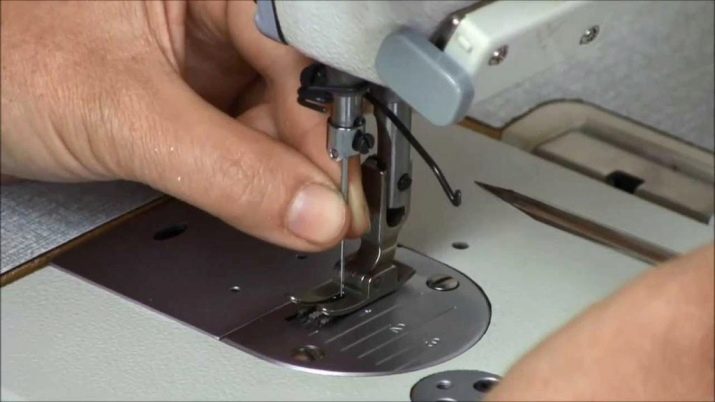
Old cars bear the nostalgic stamp of the past time, they remind us of the life and life of our grandmothers. Those who decide on such an acquisition will be able to feel the atmosphere of antiquity and should be prepared for the fact that the machine may be in working condition or require minor repairs, as some models have an amazingly long service life.
See below for how to use a manual sewing machine.
